The newspaper serial debuted 72 years ago, on June 16, 1952…
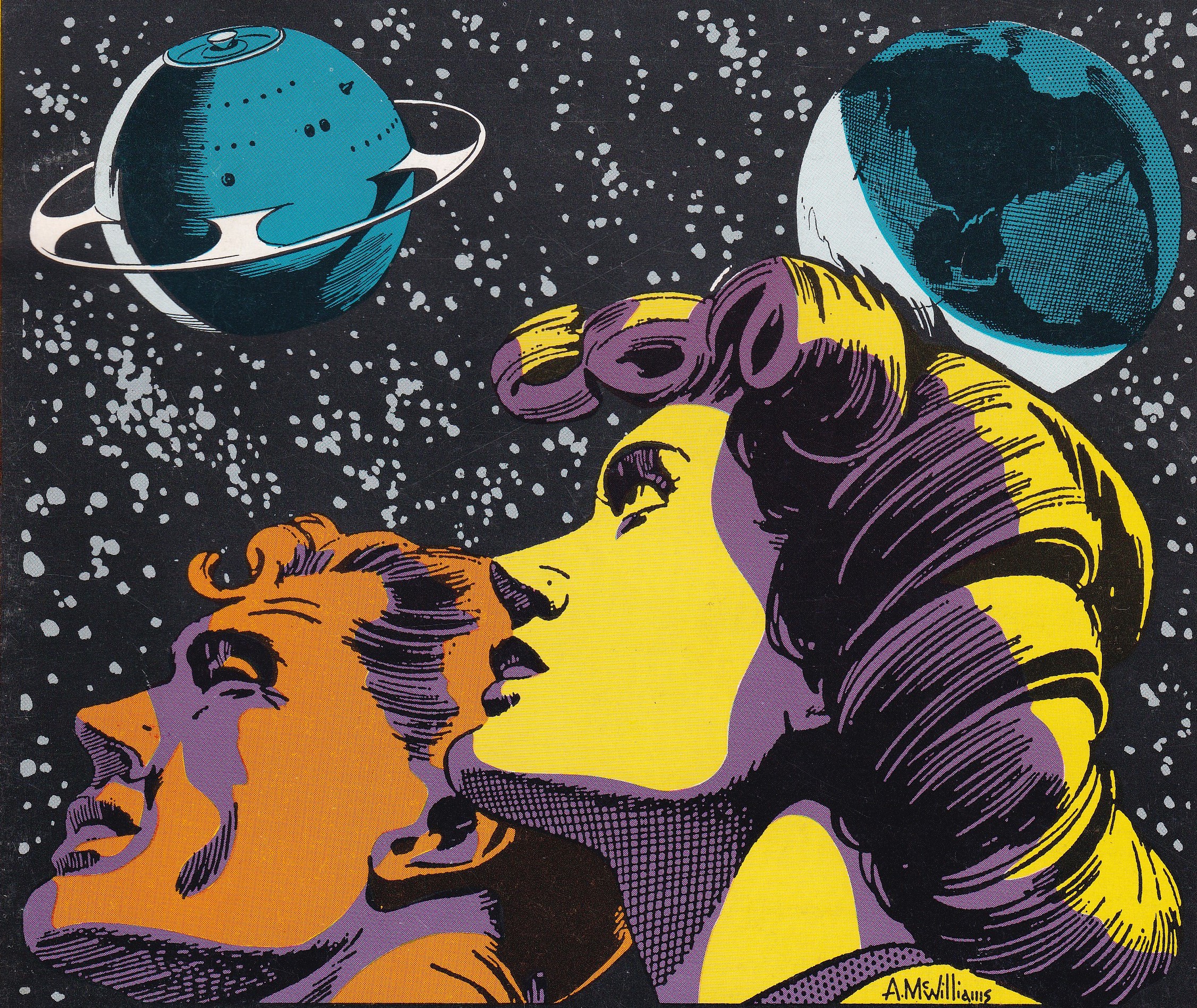
Cropped image from the cover of Science Fiction Classics #1 (Dragon Lady Press, 1987)
By PETER BOSCH
On June 16, 1963, Russian cosmonaut Valentina Tereshkova became the first woman in outer space. On June 16, 1952, exactly 11 years earlier, the first newspaper comic strip storyline of Twin Earths began with a woman named Vana rushing to FBI headquarters, where she admitted she was a spy and asked for protection… and that she was from the planet Terra.

The start of the first storyline. June 16, 1952
Twin Earths was an excellent science-fiction comic strip that ran until May 23, 1963, just weeks before Tereshkova’s flight. Written by Oskar Lebeck and drawn by Al McWilliams, the stories focused on our Earth and the duplicate planet Terra, which revolves around the Sun but directly on the opposite side so no one here knows about it.
The daily strip began proper on Monday, June 16, 1952, but some newspapers ran a two-strip preamble with text information about the basic premise on the Friday (June 13) and Saturday (June 14) before it.
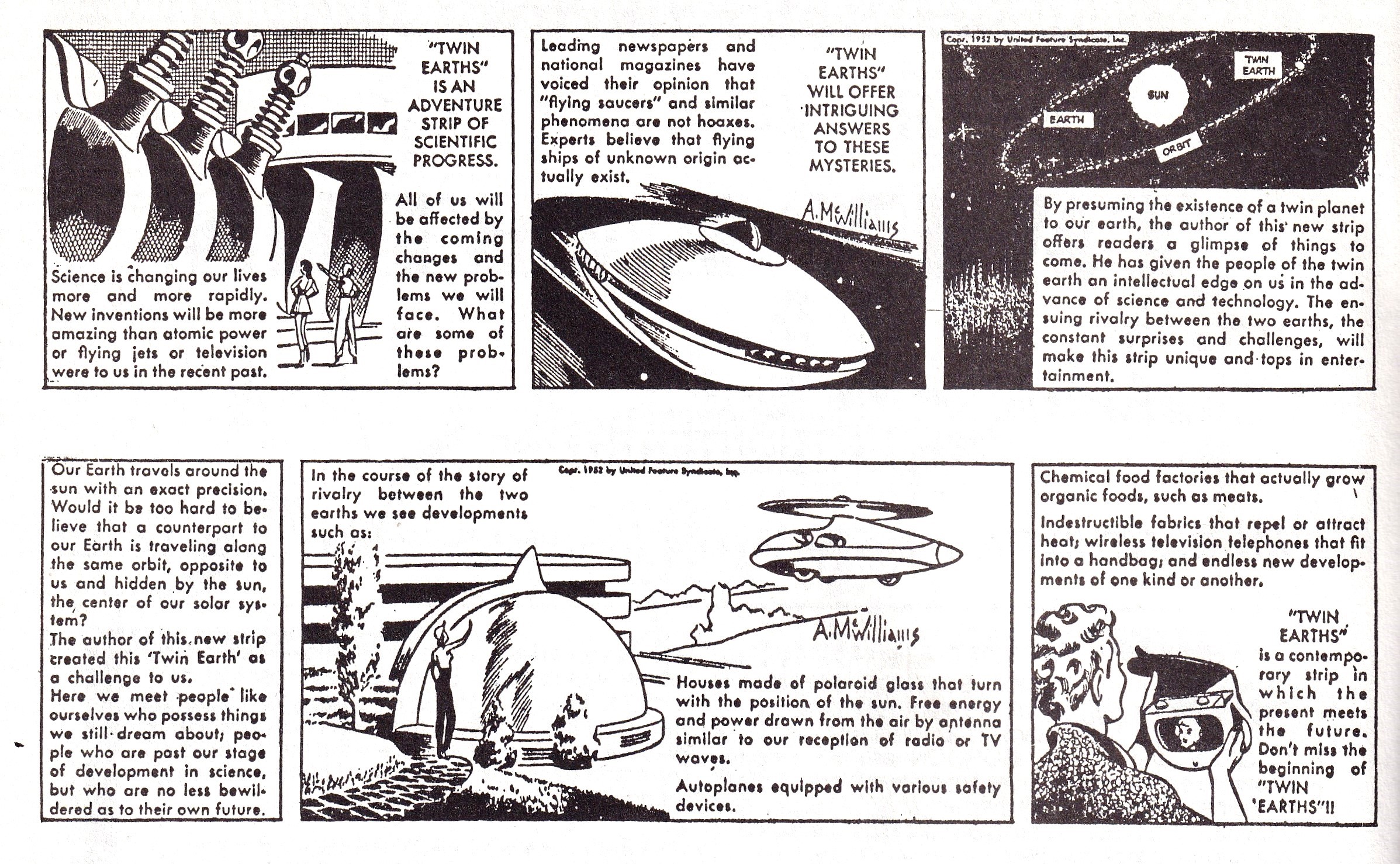
The two preliminary strips introducing the series
Terra is a planet where the women — almost every one of them drop-dead gorgeous (ah, those glorious sci-fi pulps, movies, and comic books of the Fifties) — outnumber the men by more than 10 to one and are the ruling class.
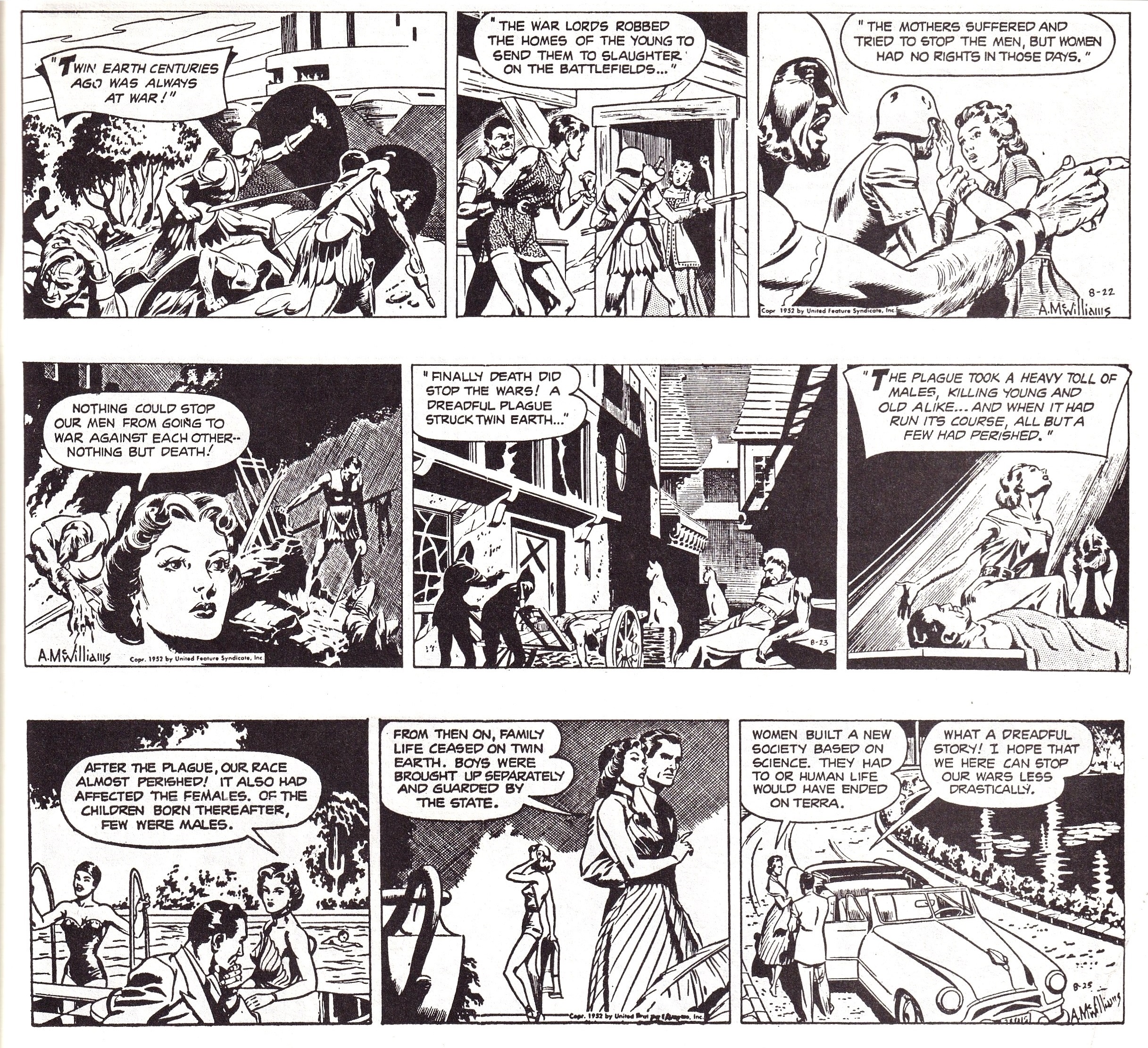
Origin of the women taking over Terra. August 22, 23, and 25, 1952.
The main characters early in the strip’s run were Vana, Garry Verth (an FBI agent), and Colonel Zena Alotera (Terra’s Secret Service commanding officer). At first, Vana thought Zena and others were trying to kill her because her sympathies were changing toward Earth and she believed Terra would soon try to conquer and colonize our planet. However, it turned out she was wrong and it was Communist agents secretly at work (this was during the Cold War, remember), trying to replace her with a double in order to infiltrate the Terrans.

September 13, 1952

December 15, 1952

December 23, 1952
When Garry accompanies Vana and Zena to a Terra space station, he marvels at their advanced scientific accomplishments.

January 29, 1953

February 25, 1953
As mentioned earlier, Terra’s men are few, and are treated like second-class citizens without any rights, but they are valued as Garry learns because each male is shared by many women for continuance of the species.
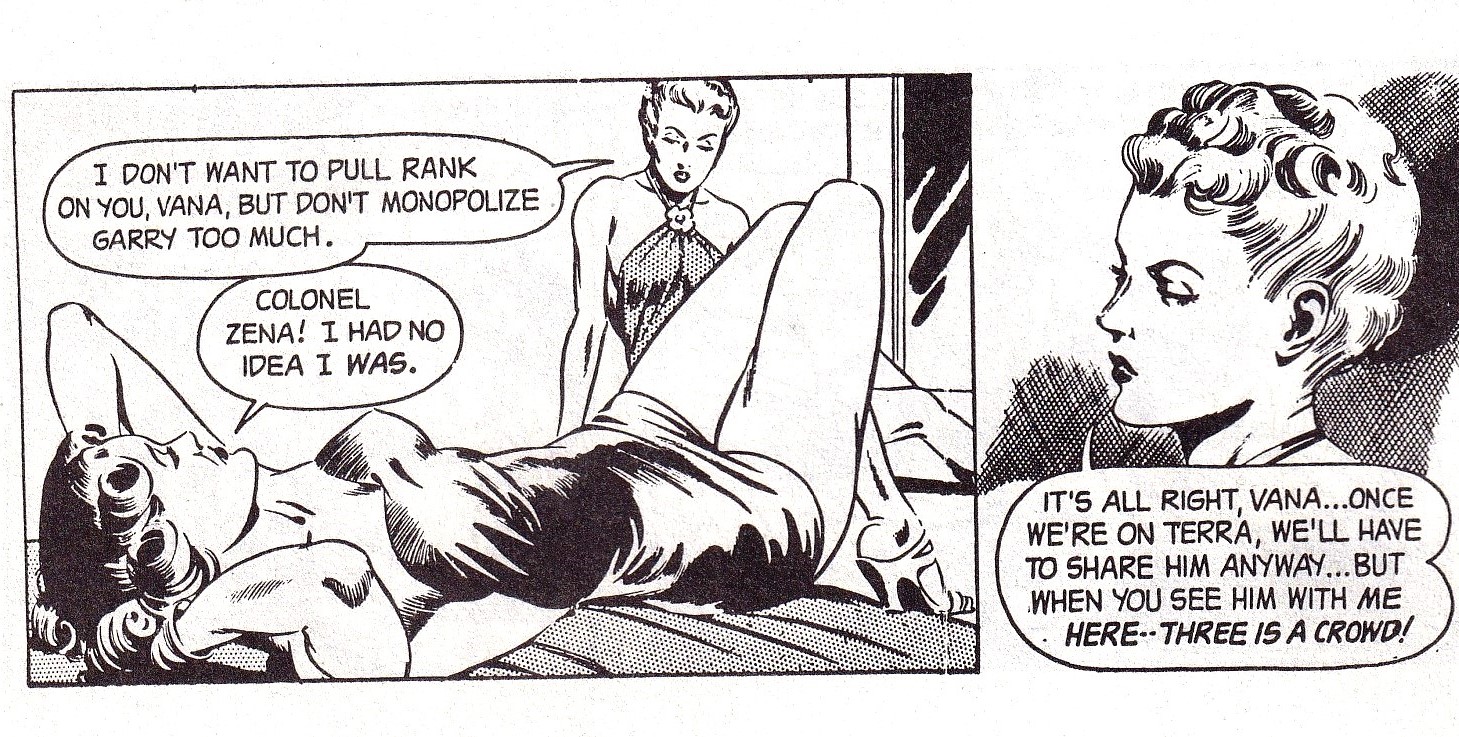
February 21, 1953
Other main characters and planets were introduced over the years of the strip, with Lebeck leaving in 1958, at which point McWilliams pulled double duty as writer and artist. (He left Lebeck’s name on the strip).
Twin Earths also had a Sunday newspaper comic page, with separate stories from the dailies, beginning on May 25, 1953. Instead of the characters in the daily feature, the Sunday strip focused on Punch, a boy from Texas who stowed away on one of Terra’s flying discs (the people of Terra did not like the term “saucers”). Unlike FBI agent Garry in the daily strip who loved being surrounded by beautiful women, Punch was not yet of an age to appreciate them and was glad when he met young Prince Torro, a fellow teenager.
Torro was part of a family line that used to be the royalty on the planet, and is treated with respect… barely… because he is known as “the royal brat” who causes nothing but mischief. The adventures of Punch and Torro — soon teamed with a teenage girl, Lahna, from Terra — followed themes lifted from Gulliver’s Travels, Swiss Family Robinson and Treasure Island. The Sunday ended on December 28, 1958.
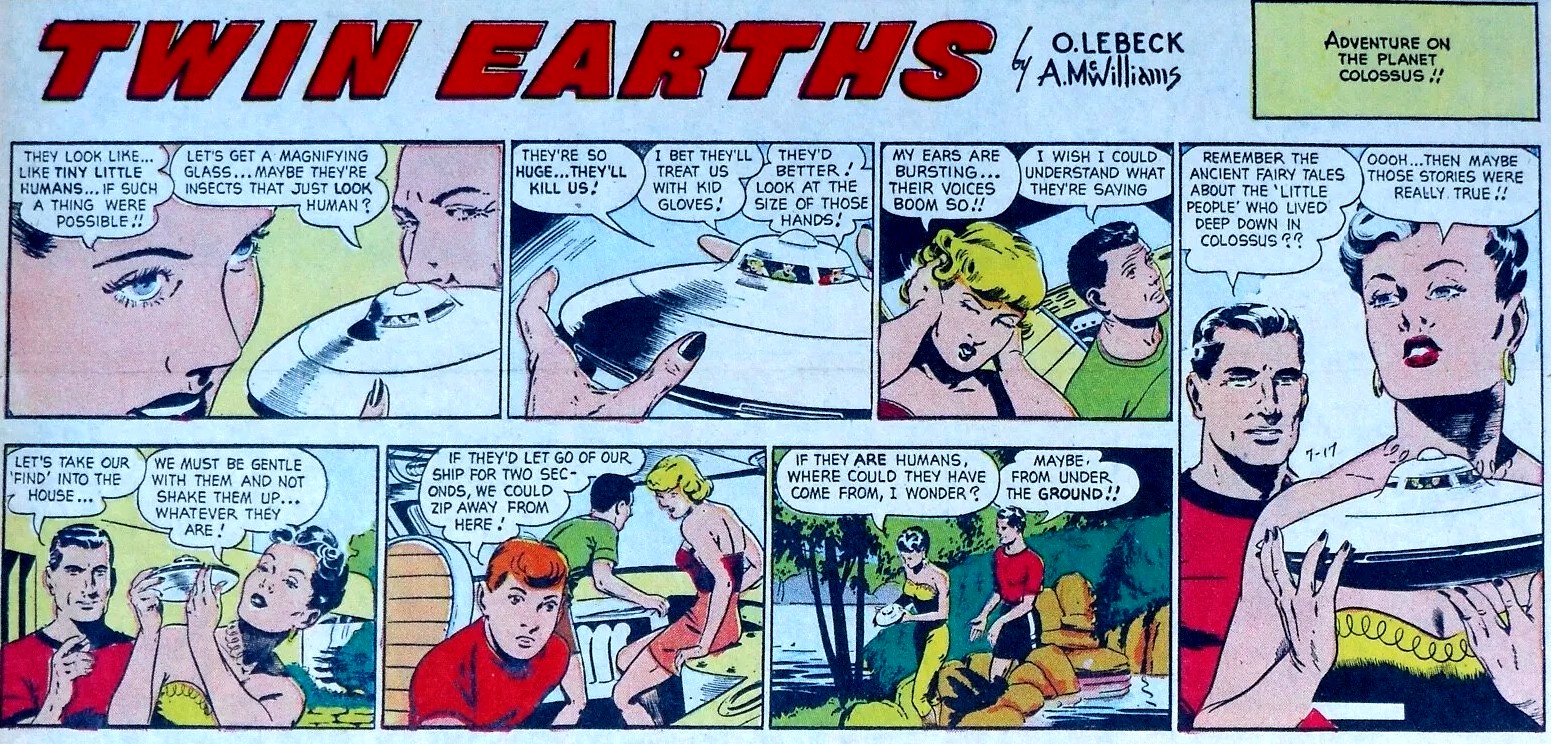
July 17, 1955
There were reprints of the Twin Earth dailies and the Sundays published in the late 1980s and early 1990s, but they were cancelled before the series could be completed. Hopefully, this will be rectified at some point.
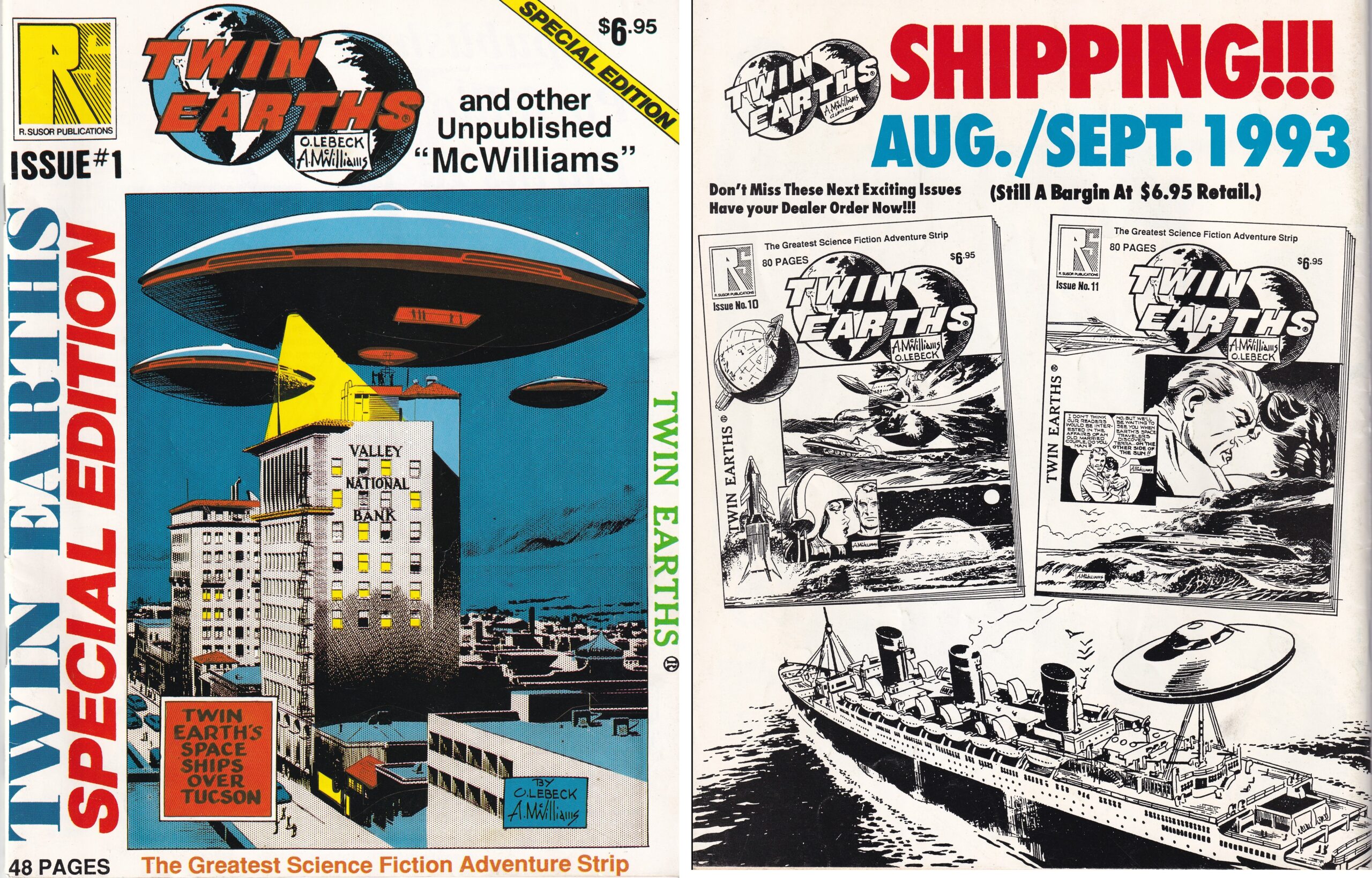
Cover to a special edition of previously unpublished Twin Earths promotional material and other strips, all drawn by McWilliams. On the back cover was an ad for reprint issues that never got published. (R. Susor Publications, 1993).
—
MORE
— A Tribute to MODESTY BLAISE — One of Comics’ Greatest Strips. Click here.
— Frank Robbins’ JOHNNY HAZARD: An 80th Anniversary Salute in 13 STRIPS. Click here.
—
13th Dimension contributor-at-large PETER BOSCH’s first book, American TV Comic Books: 1940s-1980s – From the Small Screen to the Printed Page, was published by TwoMorrows. He is currently at work on a sequel, about movie comics. Peter has written articles and conducted celebrity interviews for various magazines and newspapers. He lives in Hollywood.
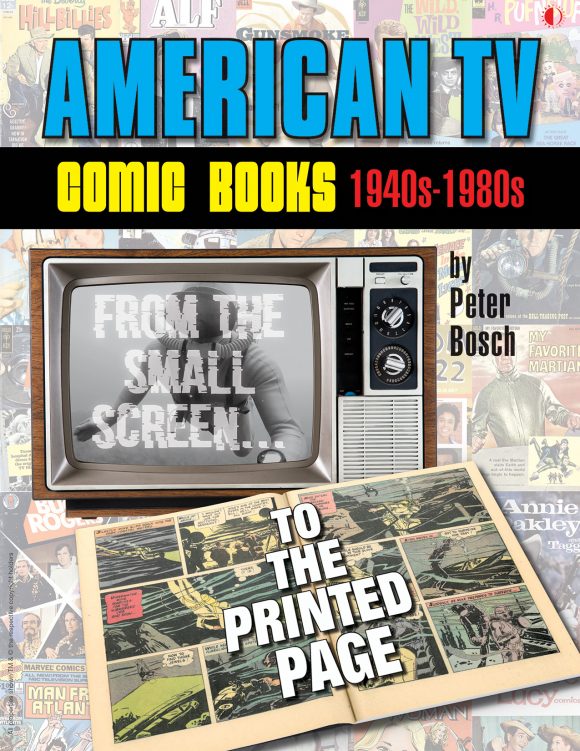

June 16, 2024
“ the stories focused on our Earth and the duplicate planet Terra, which revolves around the Sun but directly on the opposite side so no one here knows about it.”
The inspiration for Marvel’s Counter Earth?
June 16, 2024
Or DC’s Earth 2?
June 16, 2024
“…. ah, those glorious sci-fi pulps, movies, and comic books of the Fifties…”, I often felt that way about ‘50s LA watching Perry Mason reruns. I read somewhere it was due to many women from Miss America like contests trying their hand at acting. I’ve no source to back that up but it makes sense.
I’ve developed recently an appreciation for the lost art of the newspaper strip. This is definitely one I’ve never heard of before today’s article. Please keep ‘em coming. Fun stuff!
June 16, 2024
Thanks, Buck. Much appreciated.
June 16, 2024
That trope has also been used in the Gor fantasy series and at least one Roy Thinness tv movie.